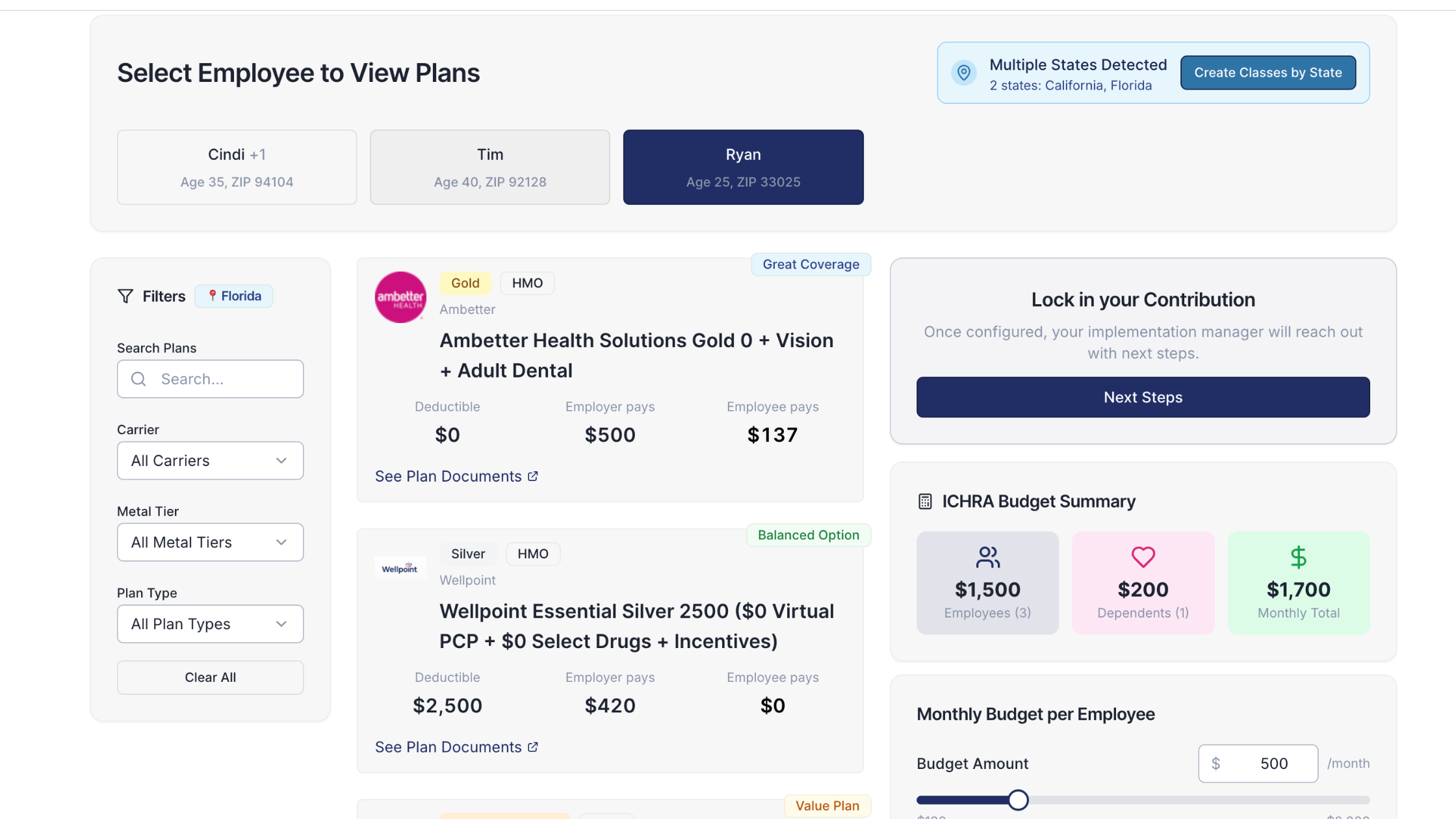How can employers set equitable allowances across salary bands?

In today's competitive job market, attracting and retaining top talent requires more than just a good salary. A comprehensive and fair benefits package is a powerful tool for employers. But how can employers set equitable allowances across salary bands? This question is on the minds of many business leaders who want to create a workplace where every employee feels valued. Offering equitable health benefits not only boosts morale but also demonstrates a company's commitment to its workforce's well-being.
What Are Health Allowances and Why Is Equity Important?
Health allowances are funds that employers provide to their employees to help cover healthcare costs. These can come in various forms, such as employer health insurance allowances or employer healthcare stipends. The goal is to give employees the financial support they need to manage their health.
When employees perceive their benefits as fair, it can lead to higher job satisfaction, increased productivity, and lower turnover rates. Equitable health benefits mean that your company’s healthcare support is accessible and meaningful for everyone, regardless of their salary. It’s about creating a system where employees in lower salary bands aren't disproportionately burdened by healthcare costs compared to their higher-earning colleagues. This fosters a more inclusive and supportive work environment.
Traditional vs. Modern Approaches to Health Benefits
For a long time, traditional group health insurance plans were the standard. However, these one-size-fits-all plans often lack the flexibility that a diverse workforce needs. They can also be expensive and complex for employers to manage.
Modern approaches to health benefits prioritize flexibility and individual choice. These include options like health insurance reimbursement tiers and salary-based health allowances. These models allow employers to offer personalized benefits that cater to the unique needs of each employee. This shift towards more adaptable benefits is where solutions like Individual Coverage Health Reimbursement Arrangements (ICHRAs) come in, offering a way for employers to provide tax-free funds for employees to purchase their own health insurance.
How to Set Equitable Allowances Across Salary Bands
Creating a system of equitable allowances requires a thoughtful and strategic approach. Here's a step-by-step guide to help you design a fair and competitive health benefits program for your employees.
Conduct a Job Analysis and Internal Equity Audit
The first step is to understand the roles within your organization and your current pay structure. A thorough job analysis will help you evaluate the responsibilities, skills, and qualifications required for each position. This ensures you're comparing similar roles when you're setting compensation and benefits.
An internal equity audit involves reviewing your current pay scales to identify and correct any disparities. This process helps prevent feelings of bias and favoritism, contributing to a more motivated workforce. By understanding where your company stands in terms of internal pay equity, you can build a benefits structure that is fair for everyone.
Market Benchmarking for Competitive Benefits
To attract and retain top talent, your benefits package needs to be competitive. Market benchmarking involves researching what other companies in your industry are offering for similar roles. You can use salary surveys, compensation databases, and industry reports to gather this data.
This research will help you understand the market rates for both salaries and benefits. By comparing your offerings to those of your competitors, you can ensure that your health benefit allowances by salary are not just equitable but also attractive to potential new hires.
Designing Health Insurance Reimbursement Tiers
One effective way to create equitable health benefits is by implementing health insurance reimbursement tiers based on salary bands. This approach involves setting different contribution levels for employees based on their income. For example, employees in a lower salary band might have a lower premium contribution, making health insurance more affordable for them.
A real-world example of this is Alexander & Baldwin, a company that moved to a three-tier plan for health insurance premiums tied to salary. Their system has three salary levels, with employees in the lowest tier paying significantly less for their health insurance than those in the highest tier. This kind of structure demonstrates a real commitment to equity and can make a big difference in the financial well-being of your employees. You could, for instance, structure your tiers like this:
- Tier 1: Employees earning up to $50,000 per year contribute 10% of their premium.
- Tier 2: Employees earning between $50,001 and $100,000 per year contribute 15% of their premium.
- Tier 3: Employees earning over $100,000 per year contribute 20% of their premium.
The Role of Employer Healthcare Stipends in Equity
Employer healthcare stipends offer another flexible way to provide health benefits. A stipend is a fixed amount of money given to employees to help them purchase their own health insurance or cover other medical expenses. This approach gives employees the freedom to choose a plan that best fits their individual needs.
When offering stipends, it's important to structure them in a way that promotes equity. You could offer different stipend amounts based on salary bands, ensuring that employees with lower incomes receive more support. This is where an Individual Coverage Health Reimbursement Arrangement (ICHRA) can be particularly effective. An ICHRA allows employers to offer tax-free reimbursements for health insurance premiums and other medical expenses, and the contribution amounts can be varied based on employee classes, such as salary.
The Venteur Solution: Simplified and Equitable Health Benefits
Navigating the complexities of creating equitable health benefits can be challenging. That's where Venteur comes in. Venteur is a leading organization in the ICHRA market, offering a platform that simplifies the administration of ICHRA benefits for companies and their employees.
With Venteur, you can easily set up and manage salary-based health allowances. The platform is highly customizable, allowing you to tailor your benefits to meet the specific needs of your workforce. Venteur's user-friendly interface makes it simple for both employers and employees to manage their health reimbursement arrangements. Plus, Venteur offers expert support to guide you through every step of the process, from planning and implementation to ongoing management.
By using Venteur's ICHRA solutions, companies can optimize their healthcare spending and reduce costs by up to 30% compared to traditional group plans. This makes it a financially smart choice for businesses of all sizes. Venteur also ensures that all plans are fully compliant with federal and state laws, giving you peace of mind.
Best Practices for Implementing Equitable Health Allowances
Clear and Transparent Communication
Transparency is crucial when it comes to compensation and benefits. Clearly communicate your new health allowance structure to your employees. Explain the reasoning behind the changes and how the new system will benefit them. This can help build trust and reinforce your company's commitment to fairness.
Hold meetings or Q&A sessions to address any questions or concerns your employees might have. Providing clear documentation that outlines the new policy will also be helpful for your team.
Regular Review and Adjustment
The job market and your organization's needs are always changing. That's why it's important to regularly review and adjust your health allowance system. Set up a periodic review process, such as an annual or bi-annual evaluation, to ensure your benefits remain equitable and competitive.
Incorporating feedback from your employees and staying up-to-date on market trends will help you maintain a benefits package that supports your team and your business goals.
You got questions, we got answers!
We're here to help you make informed decisions on health insurance for you and your family. Check out our FAQs or contact us if you have any additional questions.
A good health insurance stipend should be based on the average cost of a basic individual health insurance plan in your area. It should also take into account the employee's salary to ensure affordability and equity across different income levels.
Medical allowance is typically a fixed amount provided by the employer and is part of the employee's salary structure. There is no specific formula, as it depends on company policy and can be a flat amount for all employees or tiered based on salary bands to promote equity.
This depends on the type of arrangement:
- ICHRA reimbursements are tax-free for employees when used to purchase qualified health insurance and eligible medical expenses. Employers can also deduct these reimbursements.
- Traditional health stipends (cash payments not through an ICHRA) are considered taxable income for employees and subject to payroll taxes.
- They make health insurance more affordable for lower-wage earners
- They can improve morale and retention among all employees
- They demonstrate company commitment to equity and fairness
- They provide predictable costs for employers
- Stay updated on federal and state regulations, such as the Affordable Care Act (ACA)
- Work with a reputable benefits provider that specializes in compliance
- Regularly review your plan structure to ensure it meets current requirements
- Consider working with experienced ICHRA administrators who handle compliance automatically
Explore more related content
What is Venteur
Explore the best human-first Health Insurance platform
Simple, personalized health benefits
Sign up in minutes, define your contribution, and let your employees choose the health plan that works right for them
Integrations to make everything run smoothly
We'll connect with your payroll and finance systems to make deductions and premium payments seamless
Easy onboarding and off-boarding
In just a few clicks, add your roster and make updates on the fly. We'll handle it from there.
Venteur Certified Brokers to help your employees pick the right plan
Our trusted brokers ensure the best outcomes for employees and employers by unlocking health savings and providing unrivaled plan options.
AI-powered plan recommendations to give you confidence while you shop
Backed by 30 years of healthcare data, Venteur’s AI helps employees compare and choose the best plan for their unique situation.
Compliance and reporting because no-duh!
Venteur manages plan administration, reporting, and compliance so you can focus on growing your business.


